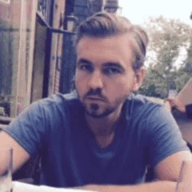Rare disease patients and caregivers around the world can feel good about the progress being made by the epidermolysis bullosa (EB) community. EB is a family of rare genetic skin disorders. Due to the absence of a certain protein skin is incredibly prone to constant damage in the form of tearing and blistering, which is extremely painful.
People affected by the disease have rallied effectively to raise awareness about the condition, but that awareness has helped accelerate promising breakthroughs on the road to a cure. Smaller communities that are looking to expand their exposure and make swift progress can look to the people working on EB as a great example of how to leverage resources, participants, and exposure for maximum impact.
An organization called EB Research Partnership does a great job of highlighting the lives of people affected by the disease. Their videos feature wonderful narratives that make us think about real people instead of a disease with a name that seems impossible to pronounce. Each piece is filled with hope, and after watching a few it’s difficult not to be motivated to help. More importantly, these videos give a voice to people with EB who live fulfilling lives despite their illness.
These initiative are working. The community at large is truly making a difference in R&D. By building awareness and enlisting the help of influential public figures, they have been able to draw attention to the illness and turn that attention into action. Researchers are using stem cells to create the new skin that is so desperately needed by EB patients. It’s another example of how gene editing can help in the lives of all patients living with rare disease.
Krystal, a biotech company out of Pittsburgh, PA, has also had success using gene therapy to help people manage their EB. Administering B-VEC, they were able to accelerate and maintain the healing of wounds caused by the disease. Both examples have the potential to improve the lives of everyone with EB. For most patients, painful baths and costly bandaging are a daily part of life, and new discoveries might make these treatments less necessary.
TREND also created a Community Voice Report that dug into conversations patients and caregivers were having on social media in an effort to find meaningful information. Check out that report here.
All parties will have to work together to raise awareness and facilitate research. The work we are doing individually has been beneficial, especially when it comes to managing disease burden. To find a cure, we will all have to work together.

